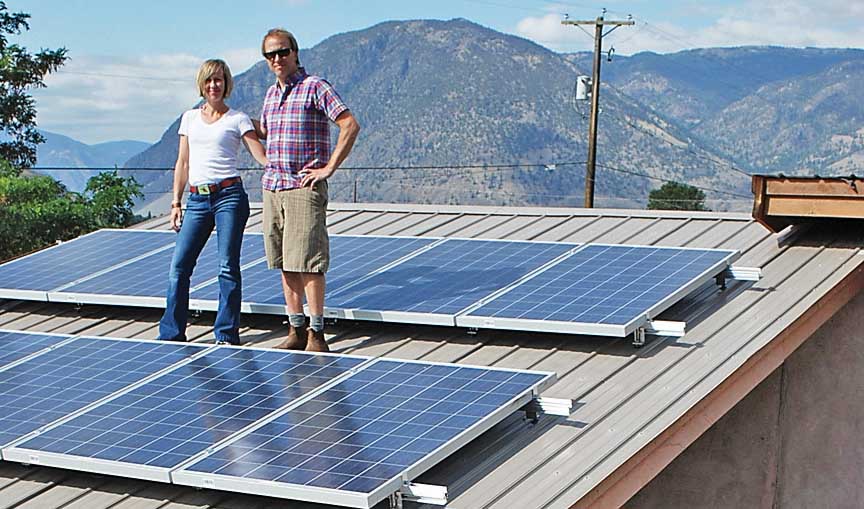
John and Virginia Weber expect the solar power installation at their winery will pay for itself within 15 years. (Courtesy Orofino Winery)
Ten years ago, when John and Virginia Weber launched Orofino Winery in British Columbia’s Similkameen Valley, the cost of solar power was prohibitive.
It would take 40 years for solar to pay back the capital investment. That, said John Weber, “was difficult to justify.”
The couple found other ways to practice sustainability. They gained recognition for building the first winery in North America insulated with bales of straw.
But they never gave up on the idea of solar. In time, economics changed. Rates for traditional power to commercial users rose by a third, making alternative energy sources more attractive. Solar arrays became cheaper. Governments offered grants for solar projects.
The Webers took the leap, and in 2012 installed a small, 2.2 kilowatt solar array that provides all the energy required for their tasting room and office as well as a small amount for the winery and warehouse.
The cost of the system was Can.$25,800 (approximately U.S.$25,500 at the time), offset by a grant of $16,766 through the province’s LiveSmart BC Small Business Champions program.
The installation reduced Orofino’s reliance on power from the grid by 24.4 percent, enough to allow the Webers to expect a payback period closer to 15 years rather than 40.
“This was a really successful project that produced excellent savings,” Weber said. “There are also some abstract benefits that include marketing opportunities and having the opportunity to decrease our carbon footprint, which is worthwhile even if other potential benefits don’t pan out.”
Those savings were most evident during the cold winter months, but also helped keep costs in check during the summer. The savings have helped offset increased power costs associated with rising production, effectively allowing Orofino to expand production more efficiently.
Hamilton Cellars
Rising electricity costs are also an issue in Washington State. Russ Hamilton, co-owner of Hamilton Cellars on Red Mountain in Washington State pays about nine cents a kilowatt hour for the power delivered to his business.
It’s more expensive than in Grant County, which draws power from two hydroelectric dams, but cheaper than neighboring Richland, where the local utility charges 15 cents a kilowatt hour, and the supercharged 25 cents a kilowatt hour levied in California.
But with upgrades to make dams more efficient and fish-friendly, Hamilton expects costs to rise more.
A year ago, he paid $130,000 to install a 33-kilowatt array consisting of 121 solar panels atop his winery that will effectively reduce his power bill to nothing more than the $17 monthly meter charge. In some seasons, the system even returns power to the local grid.
“I have installed enough panels to be what’s called net-zero, so that I should break even and actually not pay anything on electricity in the course of the year,” he said.
A federal Renewable Energy for America Program (REAP) grant covered a quarter of the project costs. Combined with other incentives, it significantly reduced the project’s payback period.
“
Other programs are possible that may increase the appeal of the alternative power systems.
Washington Governor Jay Inslee recently directed the State Department of Ecology to develop a cap on carbon emissions statewide and is open to state incentives to support alternative power generation.
Still, Hamilton acknowledges that not everyone is willing to undertake a six-figure investment.
“With a lot of these grants, you have to pay and then you get credited later,” Hamilton said. “People wouldn’t want to go out and borrow money just to wait for the federal monies to come in.” •
– by Peter Mitham






Leave A Comment